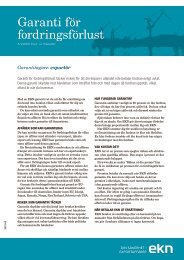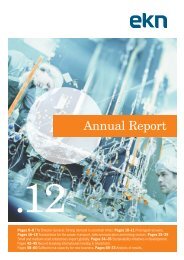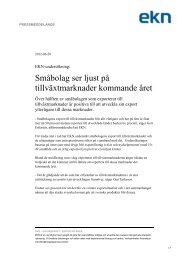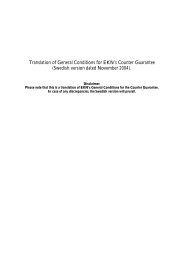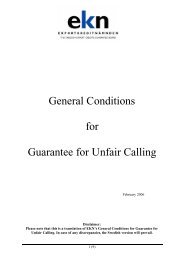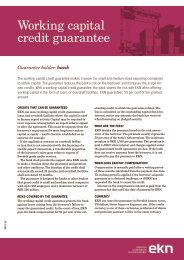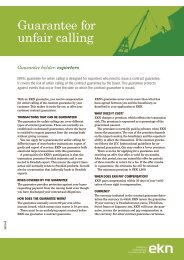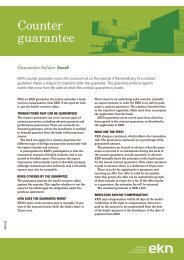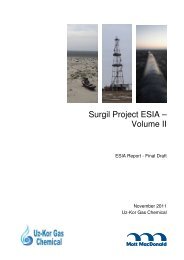Surgil ESIA Report - Volume III - EKN
Surgil ESIA Report - Volume III - EKN
Surgil ESIA Report - Volume III - EKN
Create successful ePaper yourself
Turn your PDF publications into a flip-book with our unique Google optimized e-Paper software.
“Management of Ustyurt GCC infrastructure objects<br />
and <strong>Surgil</strong> GCF construction” UE »<br />
<br />
<br />
<br />
<br />
<br />
<br />
Decision of CM of the RUz “On approval of the Regulations on order of conducting of state<br />
cadastre of especially protected natural territories of the Republic of Uzbekistan” № 104<br />
from March, 10. 1998<br />
Decision of CM of the RUz “On approval of the Regulations on order of creation and conducting<br />
of Uniform system of the state cadastres of the Republic of Uzbekistan” № 255<br />
from July, 17. 1996 (with amendments).<br />
Appendix № 1 to the decision of CM of the RUz “Regulations on order of allotments granting<br />
for mineral deposits development” № 20 from January, 13. 1996<br />
Appendix № 1 to the decision of CM of the RUz “Regulations on order of conducting of the<br />
state cadastre of flora objects of the Republic of Uzbekistan” № 343 from September, 5.<br />
2000<br />
Appendix № 1 to the decision of CM of the RUz “National strategy on decrease in greenhouse<br />
gases emission (fundamentals)” № 309 from October, 9. 2000<br />
Appendix № 2 to the decision of CM of the RUz “Measures for realization of National strategy<br />
for decrease in greenhouse gases emission” № 389 from October, 9. 2000<br />
4.3. Analysis of the currently in force acts and regulations in the territory of Republic of Uzbekistan<br />
show that:<br />
Enterprises, organizations, establishments, separate persons are obliged to introduce nonwaste<br />
and low-waste technologies, to reduce production and domestic wastes generation, to<br />
make their neutralization, processing, to observe rules of their sorting, warehousing, disposal<br />
and recycling. There is forbidden wastes storage and disposal on the settlements lands of nature-conservative,<br />
health-improving, recreational and historical and cultural purpose, within<br />
water protection zones and zones of water objects sanitary control, in other places where<br />
there can be danger to citizens’ life and health, and also especially protected natural territories<br />
and objects.<br />
Water protection zones are the protected natural territories adjacent to rivers’ channels, lakes,<br />
reservoirs, channels, collectors and other water objects. These zones are formed with a view<br />
of prevention of pollution, contamination, desiccation and silting of water objects by products<br />
of soils erosion, and also for maintenance of the favorable water regime.<br />
Wastes disposal in interior is supposed in exceptional cases by results of special researches<br />
with observance of requirements on maintenance of citizens’ life and health security, environmental<br />
safety, natural resources safety.<br />
Landfills for wastes neutralization and disposal should be placed according to hydrogeological<br />
conditions, as a rule, in sites with poorly filtering grounds (clay, loams, slates),<br />
with ground waters occurrence during their maximum lifting, taking into account water lifting<br />
during landfill operation, not less than 4m from the lower level of land-buried wastes.<br />
At placing of cards in grounds, characterized by filtration factor 10 -7 sm/s (for substances of I<br />
and II danger class), disposal of the toxic wastes is supposed without special measures for<br />
watertight diaphragms installation. There is provided watertight diaphragm at more permeable<br />
grounds or their instability (decompaction) to infiltrate.<br />
"Industrial wastes storages” construction is not supposed in the areas of fresh underground<br />
waters fields, in areas of influence of the centralized underground waters intakes, in areas<br />
underground waters discharge (thinning) in surface reservoirs and drains. "Industrial wastes<br />
storages” should be placing in the flood-free territories, formed by poorly filtering rocks<br />
with a glance of seasonal fluctuation of the ground waters level with its maximum occurrence.<br />
Departmental ecological monitoring of "industrial wastes storages” influence on environment<br />
is carried out by their owners. Water, air and soil sampling frequency from checking points<br />
for chemical analyses is determined by the enterprise by recommendation of bodies of<br />
- 7 -



